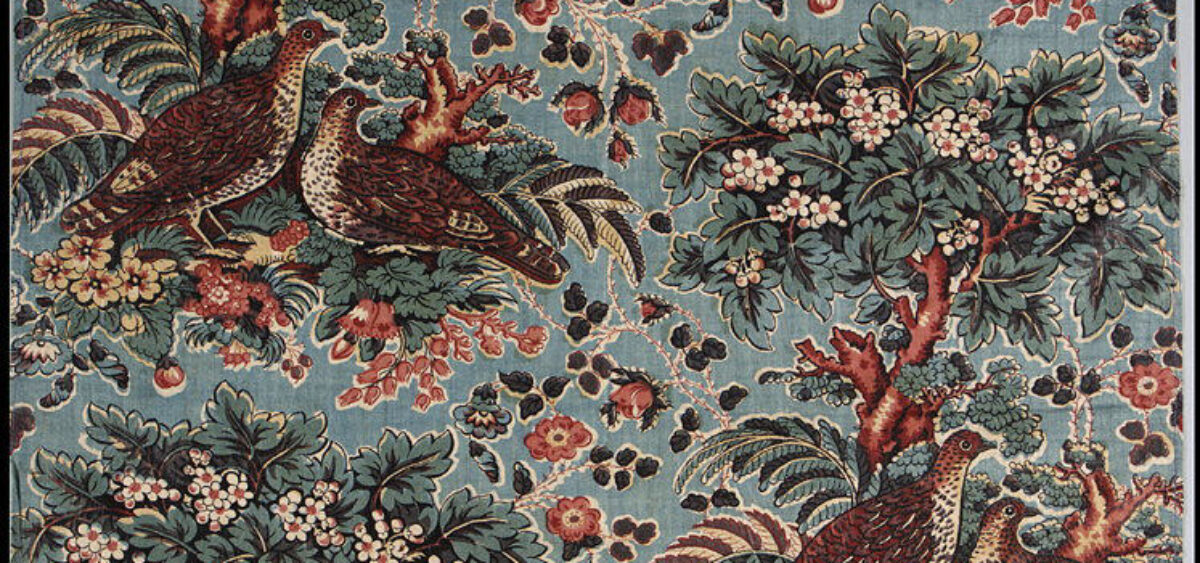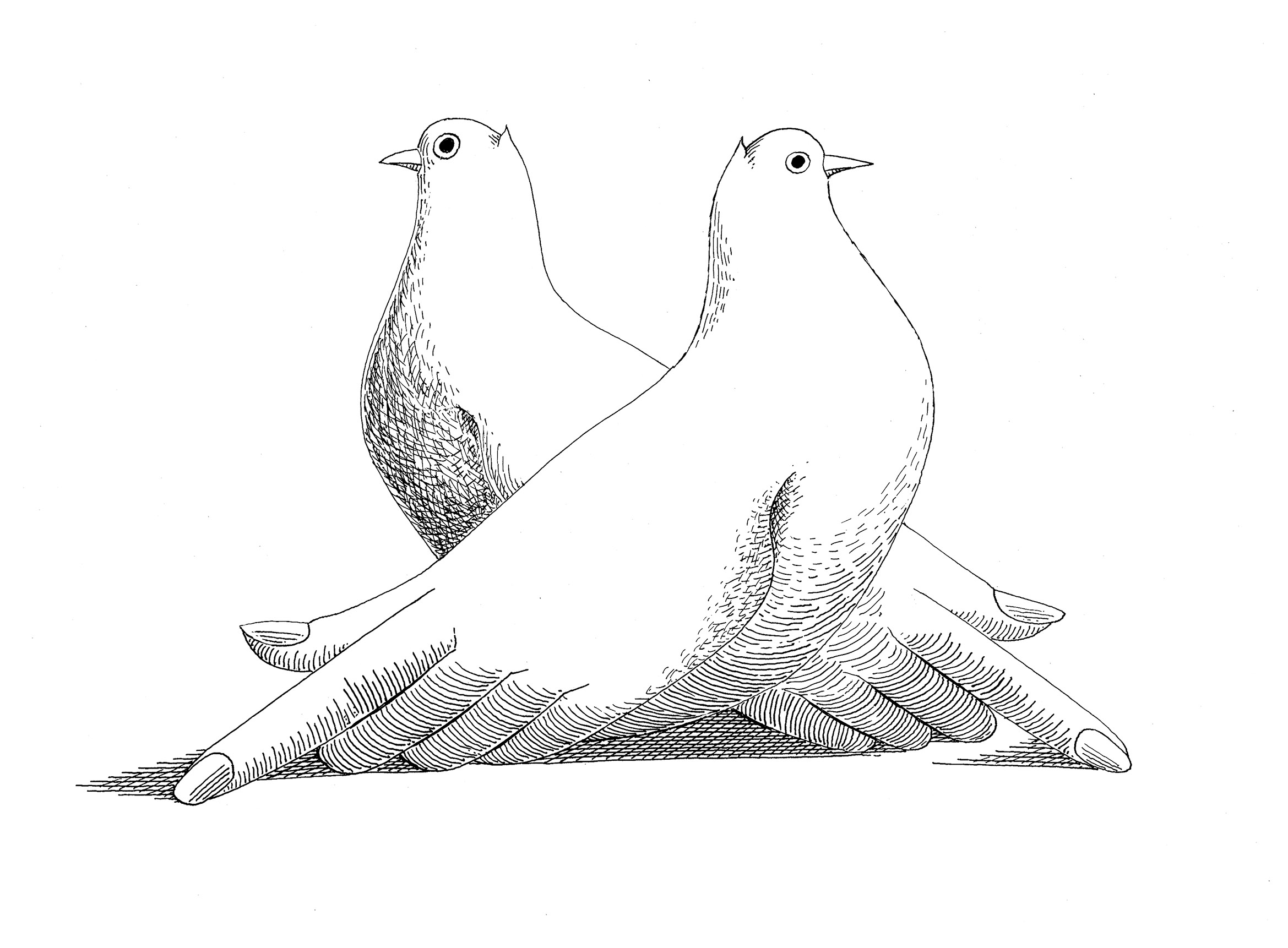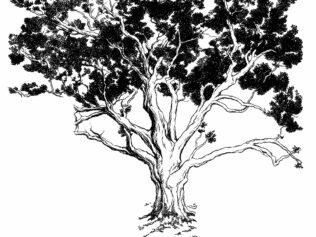
After a few seconds had passed, Pinocchio said tsree and flew off, its wings leaving a breeze on my forehead.
Zee zee said the goldcrest, which can be translated as ‘here here’. Tsrree!, the treecreeper zealously agreed, dropping down like a leaf. Tsrree tsrree, the tits joined in a similar dialect, nodding their heads. Somewhere to the side, a nuthatch started to mock them. The single kik of the great spotted woodpecker mixed with the eager chit chit of the willow tit and marsh tit. Within a minute, floating right above me in the crowns of the pines and spruces, and even all around in the hornbeams and hazels, was a cloud of sounds and movement. Movement, because it was difficult to spot anything straight away. Waving. Jumping. Short bursts of flight. Something you could notice even in the remains of the nettles or reeds and on the ground. I was standing in the middle of a mob of birds, though I can’t fly.
In the winter, the birds of the trees (a term for which is definitely lacking in natural sciences) group into flocks and forage in the area, looking for food. They are like an organism that penetrates every corner of the biochore (in this case, the forest) with each of its tentacles. If a goldcrest should find a cluster of butterfly eggs or larvae somewhere, it will call out to its brothers, with the starvelings from other species in tow. Meanwhile, in the forest you hear a wave of zee, tsree and chit. As if everybody was whispering to one another. Or quieting each other down. These are contact calls, a secret winter grammar of the birds. They allow them to come together as a flock, keep to the group and show the way. The zee zee of the goldcrest sounds like ‘here here’, but it is sometimes interrupted by a long and calm zzzeeee – like a moment in which to catch a breath and ask: “What now? Which way?”
I look around to see who came. Despite the fact that it’s already spring, the weather is still quite frosty. It’s not easy to turn your head much when it’s bundled up in two scarfs, and the spruce trees in the primeval forest are as tall as 12-story buildings in Warsaw. You have the goldcrest, common treecreeper, nuthatch, great and middle spotted woodpecker, and the lesser spotted woodpecker. You also have tits: the great tit, blue tit, marsh tit, willow tit, crested tit and coal tit. The characteristic tsirr sound reveals the presence of long-tailed tits. Probably only for a moment, but a blackbird also joined the group. 13 species in total. With your eyes and ears, you can count up to as many as 50 birds. Trrrek trrrek warns the nuthatch, who has discovered that I am not a tree. So that’s what I sound like in its language? Trrrek?
That is also why they come together in the winter. The whole crowd feeds from the tops of the spruces all the way down to the undergrowth, so somebody will always notice a threat. In the primeval forest, that could be a hawk, a sparrowhawk, or even a pine marten, ermine or lynx. Or sometimes a small owl. Although it is barely as big as a starling, an owl can capture a woodpecker larger than itself and drag it over to the hollow in a tree where it collects its supplies. The foragers know each other’s contact calls, and the same thing goes for warning calls. It’s enough that a great tit yells peenk! and right away, the blue tit echoes that with churrrrit!; the other birds hide deep in the crowns, in the tree holes and under thickets. The woodpeckers stop feeding and cling to the branches, as a buzzard flies low over the woods.
The goldcrest looks like four grams of olive-colored fluff with big eyes and a yellow stripe on its head. At least from the bottom, the great tit is a yellow round belly with a black stripe in the middle. Right next to it, albeit at a two-metre distance to emphasize its independence, a blue tit feeds. It also has a yellow belly, but its cap is blue, not black like the great tit’s. Blended in grey and white, like dirty snow, are the willow tit and the marsh tit, both wearing black berets. They are so much alike that you can distinguish them only by the width of their little ‘ties’ (or by their voices). The sharp crest is a dead giveaway of the crest tit, which is poking about the thinner shoots of the pine in the company of the coal tit. But there’s no way you can confuse the white long-tailed tit with anything else – it looks like a cotton ball with a stick-tail in it. Everybody knows what woodpeckers look like, so we’re left with the nuthatch – a strange ‘starling’ with a Zorro headband on its eyes and a blue coat. It bows its head while running down the trunk of the pine tree with amazing agility.
The nuthatch moves about the tree like a woodpecker (meaning vertically), while leaning its body on the hard feathers of its tail (the ‘rectrice’). The feet of the nuthatch are so strong that it simply walks where its eyes carry it; it doesn’t crawl or hop. It is the only bird in Europe that can walk head down. Indeed, it can stay that way for as long as needed, waiting until the hawk flies away, or until the brawl between the Syrian woodpecker and the great spotted woodpecker is over. I once observed a nuthatch that was disturbed by something while walking down; it lifted its head up and looked around. It remained rooted in that position for 5 minutes and 25 seconds, looking about from time to time.
Everybody in the flock is in a hurry, but only seemingly in the same way. Goldcrests consistently penetrate the topography of spruce branches while looking at their bottom sides. They are clearly interested only in branches with needles. Some of them support themselves with their lowered wings, like small parrots. Others do ‘helicopter flights’: they hang on the ends of limp shoots like hummingbirds as they look for something to eat. The ends of small branches, places visited by very few, are a guarantee that food will be found. After all, who could be a competitor for the goldcrest, there at the edge of the spruce’s geography? It couldn’t be the chubby tit, which can weigh even three times more than the goldcrest. Only the long-tailed tit! They are a bit heavier than the goldcrest, but keep their balance well thanks to their rather longish tails. White balls hang here and there, like Christmas tree ornaments. They sometimes dangle on one foot (!), while they pull over the thin shoots to their short beaks. At the same time, they work their tails like a tightrope walker works a pole while emitting their characteristic tsirrr!
German ornithologists conducted a strange study that involved cutting off the tails of adult long-tailed tits. It turned out that the birds deprived of their rudders could not hang onto the ends of thin branches, because they could not balance anymore (were they expecting anything else?!). Yet that’s where they get as much as 80% of their food. That’s why the trimmed long-tailed tits changed their place and method of foraging. They moved to where the other tits were: the thicker branches.
The tits seemingly do the same things that the goldcrests do, but they aren’t able to look at the limp spruce paws from the bottom, and they avoid its ends (except maybe the smallest coal tit). They quickly, though quite meticulously, study the top sides of the shoots and larger branches. The crested tit chops away at the knot with its beak, chipping off the bark like a woodpecker (it can, after all, carve out a hole in a tree for a nest). The marsh tit hammers at the seed of a maple. The great tit is also knocking on something stuck high up – it could be an acorn (they also feed on them). A few blue tits hang low on the reeds. They make little holes in them and eat something tasty from the inside of the tube-like stems. The tits also fly up to the tree holes, to the insides of enormous empty oak and hornbeam trunks, which there are more than enough of in the parts of the forest that haven’t yet been destroyed by the forest management. They find insect cocoons; perhaps hibernating snails or arachnids. The food is frozen and needs to defrost in the small organisms of the birds.
The tits meet up with the nuthatch and the woodpeckers on the larger branches and trunk of the tree. They avoid being too close to them; the great spotted woodpecker chases them off, making a lot of noise. Even the nuthatch doesn’t spare them, which may suggest competition. This is because the nuthatch and woodpeckers sometimes hide supplies in the fissures of the bark, and do not wish to have the tits take advantage of them. Hazelnuts, hornbeam nuts, acorns. Seeds, pine cones, spruce cones. Although the tits do sometimes collect supplies made up of seeds, blueberries and insects. When the winter flock finds these supplies, nobody asks who they belong to.
The great spotted woodpecker is the only Polish woodpecker that knows how to pick cones and place them in ‘forges’. It’s easy to find such a place by observing the many shells lying around it. That ability gives it a better chance of surviving the winter when the snow and frost make foraging difficult. Although when compared to the rarer yet more sophisticated white-backed woodpecker, the great spotted one has the manners of a football hooligan, it nonetheless earns admiration when it picks a heavy cone with the greatest difficulty (during flight!). You think that it will drop to the ground along with the cone; yet with super-bird strength, it pulls out of the dive and lands on a cracked birch tree. It stuffs the prize into the fissure, and doesn’t care about the frost. Soon it will swallow about a hundred light yet nutritious seeds.
Suddenly, just above the ground, a mouse runs up the base of an elderly spruce! And it continues to climb up, stopping time and again. Mouse? It’s a treecreeper! A grey bird the size of a tit, with a long tail. It feeds mostly on the trunks of trees. It uses its curved beak like a pair of tweezers to penetrate nooks and crannies otherwise inaccessible to woodpeckers and nuthatches. It climbs up in a spiral motion, higher and higher, nearly disappearing from sight. And suddenly, it falls like a leaf on the base of the neighbouring tree. It mimics the flight of the leaf quite faithfully (and deceptively so). Thanks to this trick, its safety is guaranteed – nobody in the primeval forest eats falling leaves.
Once I was standing on the trunk of an ash tree that had fallen among the vast marsh, and I nearly lost my balance. As I started falling into the mud and onto the palisade of dead trees, I was relieved to have caught the trunk of a nearby spruce, hitting my temple against it. At the end of my nose, just under a protruding piece of bark, I saw two black eyes and the sharp nose of the woodland Pinocchio. After a few seconds had passed, Pinocchio said tsree and flew off, leaving a breeze on my forehead from its wings, and a nest with seven whitish pills. The nest of the treecreeper.
***
It’s freezing. The small owls sit in their holes on frozen supplies made up of dead birds, and heat them up with their own body warmth before they grab a late-night snack. Nearby, the crows have settled in close to each other, ready to get some sleep (probably no cuddling though). A small woodpecker hanging from a branch collects scraps of food from its chest, which ended up there when it was chipping away at the bark. The human removes his felt rubber waders and rubs his frozen feet. That entire day he followed the amorphous creation that the winter flock of birds is, learning the high-pitched tsree of the tits. Once, when a few species were flying around and a tsree came from somewhere, he unknowingly addressed the birds: “Who said that?”
It’s nearly dusk and the ever smaller flock feeds ever so intensively. And closer to the ground. You need to eat as much as possible before going to sleep. Flights become quick. Short. Voices grow silent. The treecreepers zip from ash to ash, unmindful of the presence of a human. They are three metres away from me. They don’t waste any more time on pretending to be leaves. Same for the goldcrests that came down for some reason. They fly just over my head. Since the sun has disappeared, they don’t perform any ‘helicopter flights’; it just takes up too much energy. The woodpeckers are long gone. Much like the nuthatches. Could it be that the larger ones turn in earlier? And where do they sleep when the temperature in the forest drops to –15°C?
Goldcrests spend the night on branches, but they can also sleep in blackbird nests, where they cuddle up to each other. Woodpeckers and nuthatches use holes in trees. Scientists aren’t sure whether they do that in groups or individually, but it can certainly occur. Tits also take advantage of any type of hole. The most interesting habits are displayed by willow tits, marsh tits and crested tits – they can even hide in the burrows of voles or field mice. Treecreepers sometimes spend the night under the bark, in holes or different nooks. Sometimes a dozen birds together. They come together in a circle with their beaks facing inwards, and wait for sunrise. If the night is freezing, but one of the birds doesn’t have enough to eat, it will die. And it will remain in the hideout, in the depths of substance.
I go back home, taking a shortcut through the woods. It’s so dark that I feel as if my eyes were closed. The memory of the flock seems to be an after-image. Oh, if I could only see goldcrests spending the night in a blackbird’s nest! How many of them could fit in there? They must jostle and argue to get a good place. Somebody probably ends up outside of the nest. And in the morning, they wake up a bit frosted from their own faint breaths. And one of them says: zee zee.
Translated from the Polish by Mark Ordon










